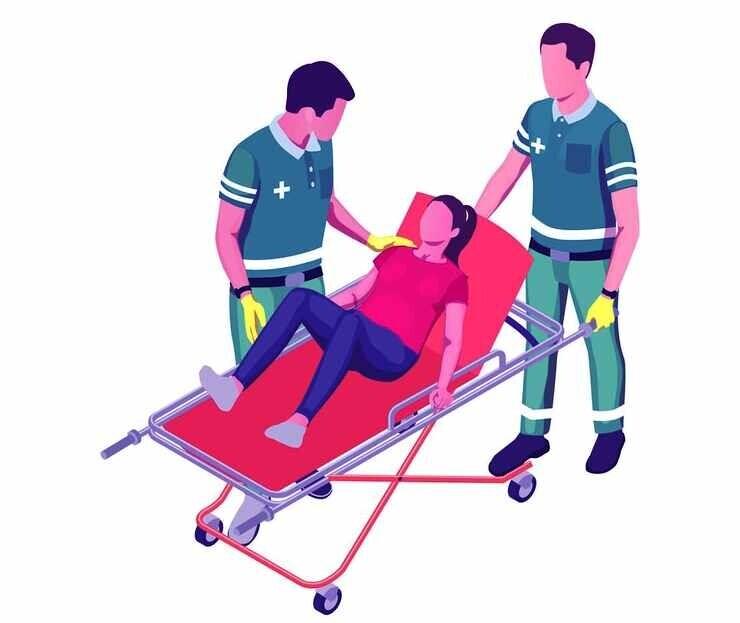

respond effectively
Emergency situations can happen anytime and anywhere, and it's crucial for individuals and organizations to be prepared to . Whether it's a natural disaster, a security threat, or a medical emergency, a well-trained and prepared team is important to save lives and minimize damage.
Effective requires a combination of knowledge, skil and resources. It's not enough to just have a plan member must know their role and be able to perform
This includes understanding the nature of the emerg making critical decisions, and coordinating with ot Additionally,having thenecessaryequipmentandresourcesonhandcanme successandfailureinanemergencysituation.
Understanding Emergency Response
Understanding emergency response is crucial in toda emergencies occur frequently. Emergency response refers to the coordinated efforts made to mitigate the impact of an emergency situati activities, including prevention, preparedness, response, and recovery.
www.metro�re.com.au

Effective emergency response requires a well-planned and organized approach to managing emergencies. By understanding emergency response, we can ensure that we are prepared to in the face of an emergency. respond quickly and effectively
The Importance of Emergency Preparedness
Emergency preparedness is of utmost importance for communities. It is the process of being ready for unexpected events such as natural disasters, accidents, or even terrorist attacks. By preparing for such situations, people can reduce the impact of emergencies on their lives property damage.
Emergency preparedness involves creating emergency plans, storing food, water, and other essential supplies, and staying informed abou respond to them.
Being prepared for emergencies can help individuals con�dent and empowered during times of crisis, and Therefore, it is crucial that people take the necessary steps to prepare themselves and their families for emergencies.

Types of Emergencies
Medical

emergencies
Emergencies can take many different forms and occur in various situations, making it essential to understand the different types of emergencies to be prepared. Some of the most common types of emergencies include natural disasters like hurricanes, �oods, and earthquakes that can cause widespread damage to property and infrastructure. quire immediate attention to prevent further harm.
Technological emergencies
risk to public safety and require specialized respon terrorist attacks, mass shootings, or riots can cau further harm if not dealt with promptly.
Utility outages, including power or water supply disruptions, can also cause signi�cant inconvenience and pose a threat to people's safety. Having an emergency plan in place and understanding the different types of emergencie communities respond effectively in times of crisis.
Natural Disasters
Natural disasters are that occur naturally and can cause extensive damage to infrastructure, property, and human life. These events can be caused by various factors, including geological and meteorological factors, and can include hurricanes, earthquakes, �oods, tsunamis, volcanic e

catastrophic events

Natural disasters can cause signi�cant disruptions to communities, including power outages, transportation disruptions, and , such as water and communication systems. In many cases, nat signi�cant emergency response efforts, including se evacuation, and disaster relief efforts.
To reduce the impact of natural disasters, it is important to take steps to prepare for them, such as developing emergency plans. It is als
Technological and Industrial Accidents
Industrial and technical accidents are accidents that happen in industrial places. They happen because of , human error, or a combination of both.These incidents can include hazardous material spills, gas leaks, explosions, or �res that pose signi�cant risks to public safety and the envi
equipment failure

Such accidents can result in injuries, property damage, and even loss of life. A special response team is needed to help control the situation and save lives. Industries like chemical plants, oil re�neries, and nuclear power plants pose high risks of accidents due to the nature of their operations.
Preventive measures, including , employee training, and adherence to safety regulations, can help reduce the likelihood of such incidents. In case of an industrial or technical accident, it procedures, leave the affected area, and seek medic
Health Emergencies
Health emergencies refer to unexpected health crises that require immediate attention to prevent further harm or loss of life. These emergencies can include heart attacks, strokes, severe allergic reactions, or accidents resulting in injuries. In many cases, early intervention is very important to a person's survival and recovery. It is important to know what to do in case of a health emergency.
administering �rst aid

Calling emergency services, performing CPR, or are crucial steps that can help stabilize the affected person until professional help arrives. In some cases, health emergencies can also require evacuation or transport to a medical facility for specialized care.

It is essential to have basic knowledge of �rst aid and emergency response protocols to be prepared for such situations. Being informed about potential health risks, such as infectious diseases, can also help individuals take to protect their health and well-being.
www.metro�re.com.au
Terrorism
Terrorism-related health emergencies can have severe consequences for public safety and require specialized response efforts. These incidents can include bioterrorism attacks involving the release of , chemical or radiation exposure, or mass casualty events like bombings or shootings. harmful pathogens


Health professionals, emergency responders, and play an important role in making sure these emergencies do not happen again. This includes evacuating areas, treating injuries, and giving survivors and their families support.
Preventive measures, such as increased border secur gathering, and increased public awareness, can also help reduce the likelihood of such events. Related health emergency, it is essential to follow , seek appropriate medical attention if necessary, and coo contain the situation.
Key Components of Emergency Preparedness

Emergency preparedness refers to the actions taken emergencies or disasters. Key components of emergen developing an emergency plan, creating an emergency potential risks. An emergency plan outlines what to including evacuation routes, emergency contacts, an
An emergency kit includes essential supplies like f supplies to sustain individuals during and after an potential risks involves being , signing up for eme noti�cations, and knowing where to access informati
Also, knowing basic �rst aid and , having a designa communicating with family and friends can also help taking these steps, individuals can better protect event of an emergency.
Communication

Communication is an essential aspect of emergency preparedness and response. Effective communication can help inform individuals about potential risks, provide guidance on what to do during an emergency, and coordinate emergency response efforts. Communication can occur through various ch alerts and noti�cations, social media, and traditio
In emergencies, it is critical to use clear and con information, avoiding jargon or technical terms that may cause confusion. Effective communication also means having a of communication. When there is no power or other problems, it is important to have a good communication system.
Additionally, communication should be two-way, allowing for feedback and input from affected individuals and communities to aid in response efforts. By working together during an emergency, communities and emergency responders can ensure the safety of those affected and

Risk Assessment and Mitigation
Risk assessment
and mitigation are critical components of emergency preparedness efforts. Risk assessment involves identifying potential hazards and vulnerabilities, evaluating the likelihood of these hazards occurring, and estimating their potential impact. This assessment helps emergency responders emergency plans and protocols to mitigate the effec

Mitigation involves taking proactive measures to prevent or reduce the likelihood and impact of potential risks. This can include actions emergency response plans.
codes
Mitigation efforts can also include investing in disaster-resistant infrastructure and public education campaigns to and promote preparedness efforts. By prioritizing risk assessment and mitigation, communities can reduce the impact of potential emergencies and increase the response time when an emergency does occur.
increase awareness of potential risks
Resource Management

Resource management is an essential component of emergency preparedness and response. During emergencies, it is critical to ensure that resources, including personnel, equipment, and supplies, are effectively managed to provide the necessary support to those affected.
Resource management involves identifying and assess prioritizing their allocation based on need and cap managing resources during emergencies and coordinating efforts among emergency responders and other agencies to ensure
deployment
Effective resource management also means that clear communication channels are maintained so that resources are deployed where they are most needed, and response efforts are coordinated.
Training and Education
Training and education are critical components of efforts. Training gives people the knowledge and skills they need to be able to respond effectively during an emergency. Education helps people understand the potential risks and how important it is to be prepared.
emergency preparedness
Training programs can include basic �rst aid, search and rescue techniques, and disaster response protocols. These programs can be tailored to the speci�c needs of different individuals and communities, including emergency responders, healthcare professionals, and the public.

Education efforts can , public awareness campaigns, and informational materials to help peop
Emergency preparedness is a way to prepare for a po
By prioritizing training and education, communities and emergency responders can reduce the impact of potential risks, that can help protect individuals and communities, and increase their capacity to respond effectively during emergencies.







